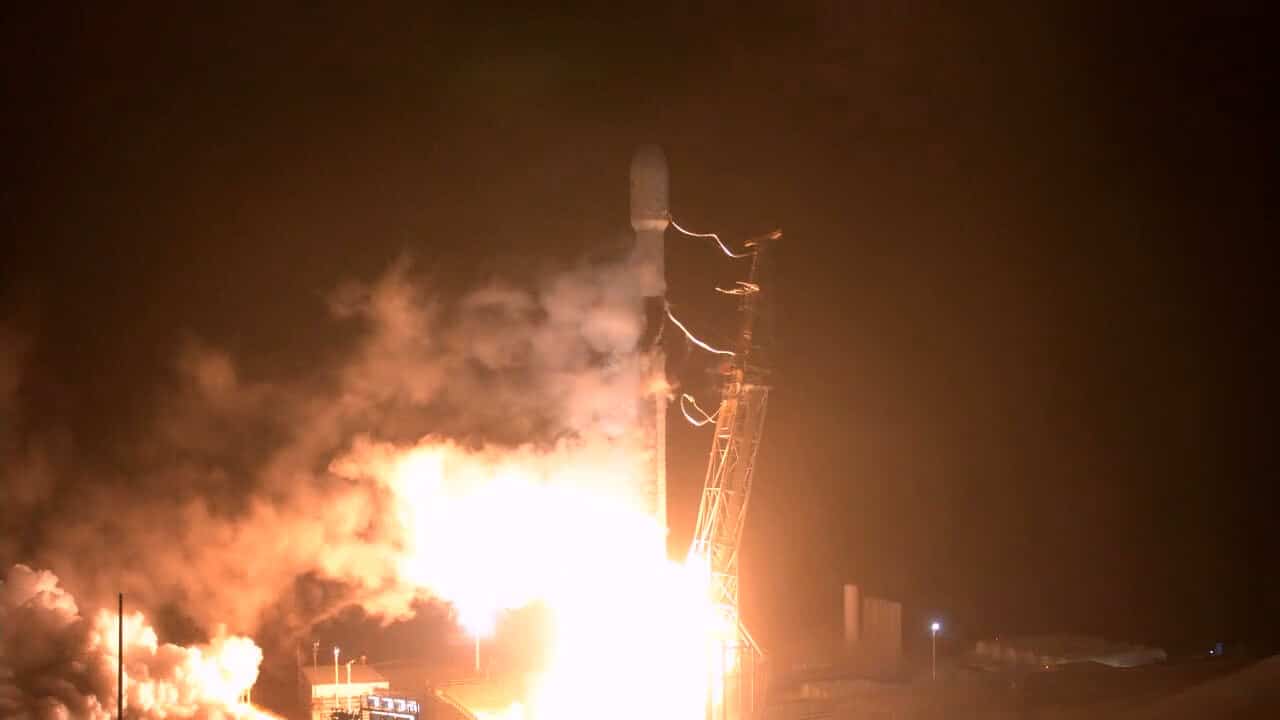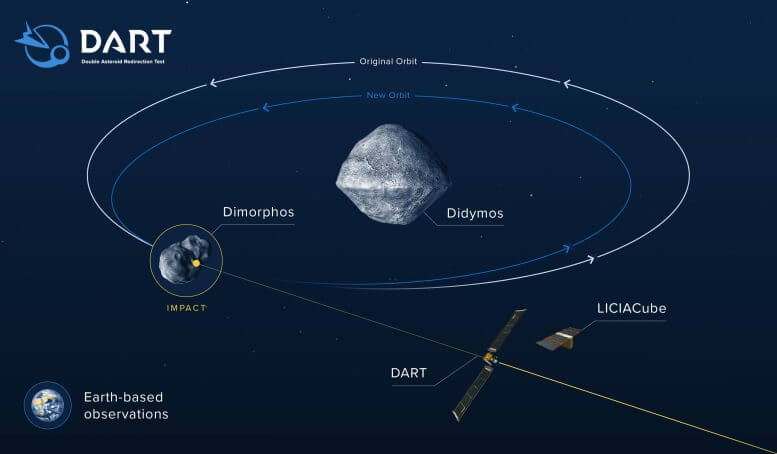The DART spacecraft will try to change the trajectory of a double asteroid / Producers of the space disaster film "Don't Look Up" on Netflix, which deals with the discovery of an asteroid that threatens the Earth Schedule its rise on Netflix for the planned launch day
Update, 24/11/21
NASA successfully launched the DART spacecraft tonight (22:21 EST on November 23, 08:21 Israel time on November 24), which will try to collide with an asteroid's moon and measure how the crash will affect the tiny moon's orbit.
The spacecraft is supposed to collide with the Dimphorphos moon orbiting the asteroid Didymus at the end of September 2022, when the asteroid will be 11 million km away, relatively close to Earth so that it can also be observed from ground-based telescopes and radars.
- This is the first mission of NASA's Launch Services Program (LSP) to fly on a previously flown Falcon 9 booster
- DART is the first interstellar mission launched on Falcon 9

Advance notice
This coming Wednesday, 24/11, NASA is going to launch the DART mission - Double Asteroid Redirection Test. The spacecraft will be launched using SpaceX's Falcon 9 launcher from Vandenberg Air Force Base in California and will meet at the end of September 2022 with the double asteroid Didymus, when the double asteroid will be 11 million km from Earth, and it will be possible to observe it using ground telescopes and a planetary radar, with the aim of measuring the change in the orbit of the asteroid's moon.
Those who waited and coordinated dates with NASA are the producers of a new movie starring Leonardo DiCaprio that will be released on the same day on Netflix and deals with three scientists who discover that an asteroid is about to collide with the Earth and encounter the indifference of the authorities.
It should be noted that this will be SpaceX's first real interplanetary mission. Originally, the spacecraft was supposed to be launched as a hitchhiker for the launch of a communication satellite, but SpaceX was enthusiastic about the idea and offered to allow a direct launch, which would also save a lot of time. Elon Musk's SpaceX is known to be planning to send humans to Mars in a controversial operation in the future.

DART is a planetary defense test of technologies to prevent an asteroid from hitting the Earth. DART will be launched towards an asteroid which is itself a moon of another asteroid, and will collide with it at a speed of 6 km per second. NASA will track the trajectory of the asteroid before and after the impact and examine how much the trajectory of the asteroid changed following the impact. The reason for choosing an asteroid that is a moon of another asteroid is that it is easier to measure the change in its orbit compared to measuring the change in the orbit of an asteroid orbiting the Sun.
The double near-Earth asteroid (65803) Didymus is the target for the DART experiment. While the diameter of the main asteroid is about 780 meters, the width of its moon is only about 160 meters, a typical size of asteroids that could pose the most significant threat to Earth. The binary asteroid Didymus was intensively observed using telescopes on Earth to precisely measure its properties before DART reached it.
DART's target asteroid poses no threat to Earth. However, the asteroid pair would be a good place to see if deliberately crashing a spacecraft into an asteroid is an effective way to change its trajectory and if it could be used if an Earth-threatening asteroid is discovered in the future. While an asteroid larger than 140 meters has no significant chance of hitting Earth in the next 100 years, only about 40% of these asteroids have been discovered as of October 2021.
Two different views of the DART spacecraft. The DRACO imager (Didymus Reconnaissance and Asteroid Camera for OpNav) is based on the new low-resolution LORRI imager. The left view also shows the Radial Line Slot Array (RLSA) antenna with rolled ROSAs (Rolling Solar Arrays). The view on the right shows a clearer view of the NEXT-C ion engine.
The collision will change the speed of the moon in its orbit around the main body by a fraction of a percent, but this will be enough to change the orbit of the larger asteroid by a few minutes - enough to be seen and measured by telescopes on Earth.
After launch, DART will deploy solar arrays and channel using a solar electric ion engine, previously tested on the DAWN spacecraft. through the use of electric propulsion.
SpaceX operates mainly in Earth orbit, including the orbit of communication satellites at an altitude of 36 km. It has also launched several payloads to the moon and even a space vehicle with a Tesla car on it into interstellar space but has never made a targeted launch to a specific celestial object that requires planning a transit between the solar system itself.
And if we go back to the movie "Don't Look Up", it goes without saying that the reality is supposed to be very different, satellites, ground telescopes and countless other means and even an agency of the United Nations are already dedicated today to locating asteroids that threaten the earth, and if such an asteroid is discovered it is likely that all of humanity Mobilize immediately, even faster than you mobilized to treat Corona.
The film's director, Adam McKay explains the similarities and differences between the film and the NASA mission
More of the topic in Hayadan:
- NASA will launch the DART spacecraft that will reach a double asteroid and try to divert its moon from its orbit
- NASA is making progress in developing a spacecraft to divert asteroids from their orbits
- NASA will not disclose details of the failure of a connection operation between two unmanned spacecraft
- An unmanned spacecraft failed in a test flight to connect to a satellite due to a malfunction in the fuel system
- Europa will protect the Earth from asteroids
